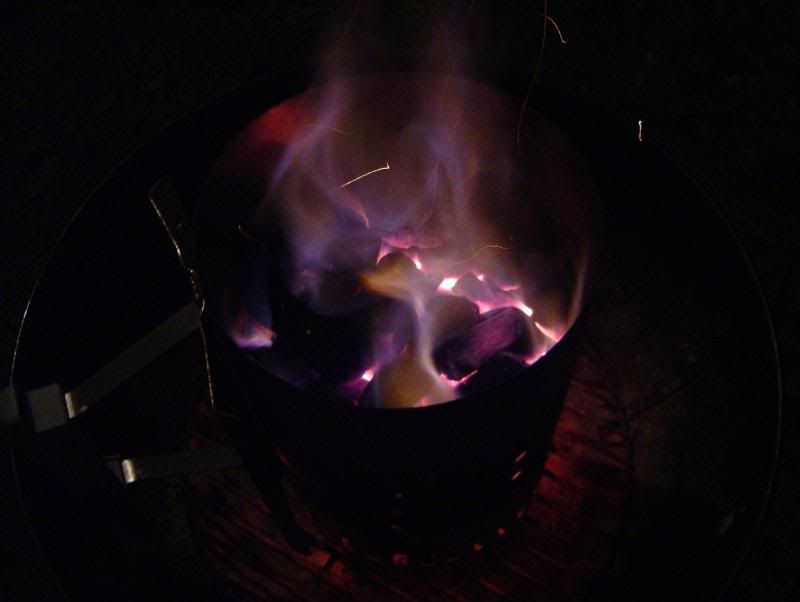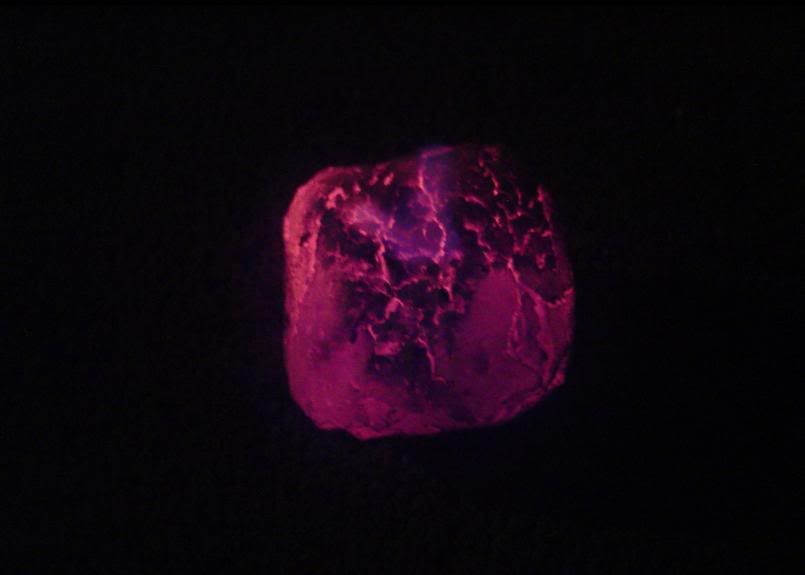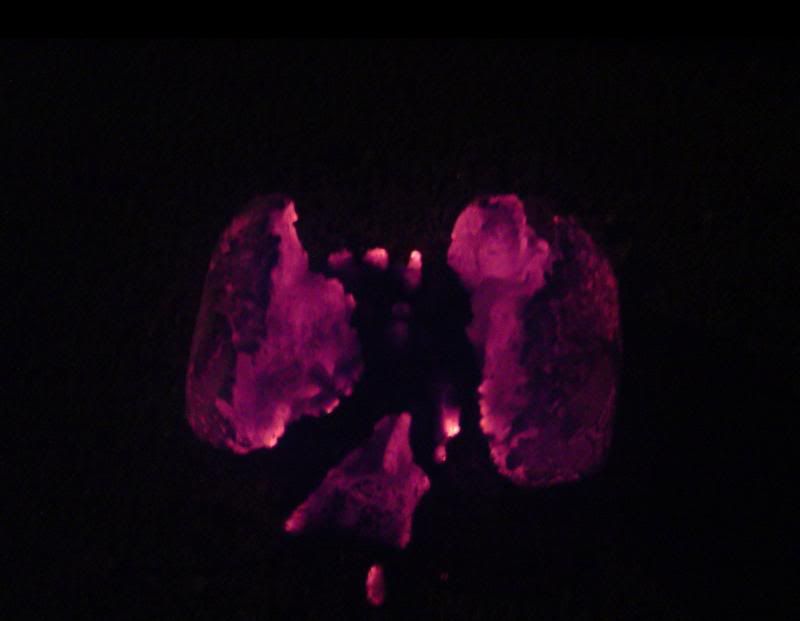I didn't want to mess up Bam's excellent thread on pulled pork with this post, so I started a new thread.
Mine is a response to chowhound's questions about using unlit Kingsford charcoal briquets in cookers.
Lee
You are right, chow (don't you just love when someone says that?)!
Here's an excerpt from an article by Chris Allingham, from his excellent Virtual Weber Bullet website. http://virtualweberbullet.com/
Bottom line ... there is no factual reason not to use unlit Kingsford charcoal briquettes in your pit. As I've said before, I start cooking with a full ring of almost entirely unlit coals in competition and at home, and have done very well.
Lee
[FONT=Verdana,Arial,Helvetica]"I once saw an episode of "Unwrapped" on the Food Network that showed how Kingsford Charcoal Briquets were made. Leftovers from wood and paper processing (branches, bark, and sawdust) are screened and then chopped to a uniform size before being "roasted" in oxygen-controlled retorts—sort of like ovens—at 600-1,800°F. The resulting char is mixed with other ingredients before being molded into the familiar briquette shape, dried, and bagged.[/FONT]
[FONT=Verdana,Arial,Helvetica]Briquettes are a convenient, inexpensive source of fuel for the WSM. The general consensus is that briquettes tend to burn longer and more consistently than lump charcoal, but not quite as hot. The consistency of briquettes is due to the fact that they are an engineered product, essentially made using a "recipe" that can be duplicated over and over again.[/FONT]
[FONT=Verdana,Arial,Helvetica]Briquettes frequently contain other ingredients in addition to charcoal to improve the performance characteristics of the product. As a result, they leave behind a considerable amount of ash, which is of concern in cookers that can't accommodate ash build-up. (Fortunately, the WSM is not one of these.)[/FONT]
[FONT=Verdana,Arial,Helvetica]It's the "other ingredients" part of briquettes that get some folks worked up. "Petroleum by-products", "toxic waste", or "fillers", they say. Well, let's take a closer—and more rational—look at the facts.[/FONT]
[FONT=Verdana,Arial,Helvetica]The only required "other ingredient" in a briquette is a binder, usually a starch of some sort that holds the crushed charcoal together when it's compressed into those little pillow shapes. The problem is that this basic briquette may not light very easily, or burn very hot, or burn very long. So, manufacturers add more "other ingredients" to improve the performance characteristics of their products.[/FONT]
[FONT=Verdana,Arial,Helvetica]Here is the official ingredient list for Kingsford Charcoal Briquets from a company press release, including the purpose of each ingredient in parentheses. The explanation after each ingredient is my own.[/FONT]
My message to you is this: Don't let people scare you away from briquettes, Kingsford or any other brand. They're a perfectly good product to use for making great barbecue!"[/FONT]
Mine is a response to chowhound's questions about using unlit Kingsford charcoal briquets in cookers.
Lee
Yeah, I didn't have much luck with lump either in keeping stable temps.
I guess I don't understand how charcoal burns. Because you can snuff it out and relight it, I always figured that the red glow I saw was only coming from the outside of the briquette wher ethe oxygen was... that the whole thing wasn't glowing red through and through. I always thought charcoal burned from the outside in. You're saying it doesn't? Are you saying that charcoal totally ignites, even in the center as it lights?
Otherwise, I stand by my thought that a piece charcoal slowly igniting itself is really no different than a lit piece igniting an unlit piece. Unless of course the binder is only applied to the outside of the briquette.
If that makes sense (lol)
You are right, chow (don't you just love when someone says that?)!
Here's an excerpt from an article by Chris Allingham, from his excellent Virtual Weber Bullet website. http://virtualweberbullet.com/
Bottom line ... there is no factual reason not to use unlit Kingsford charcoal briquettes in your pit. As I've said before, I start cooking with a full ring of almost entirely unlit coals in competition and at home, and have done very well.
Lee
[FONT=Verdana,Arial,Helvetica]"I once saw an episode of "Unwrapped" on the Food Network that showed how Kingsford Charcoal Briquets were made. Leftovers from wood and paper processing (branches, bark, and sawdust) are screened and then chopped to a uniform size before being "roasted" in oxygen-controlled retorts—sort of like ovens—at 600-1,800°F. The resulting char is mixed with other ingredients before being molded into the familiar briquette shape, dried, and bagged.[/FONT]
[FONT=Verdana,Arial,Helvetica]Briquettes are a convenient, inexpensive source of fuel for the WSM. The general consensus is that briquettes tend to burn longer and more consistently than lump charcoal, but not quite as hot. The consistency of briquettes is due to the fact that they are an engineered product, essentially made using a "recipe" that can be duplicated over and over again.[/FONT]
[FONT=Verdana,Arial,Helvetica]Briquettes frequently contain other ingredients in addition to charcoal to improve the performance characteristics of the product. As a result, they leave behind a considerable amount of ash, which is of concern in cookers that can't accommodate ash build-up. (Fortunately, the WSM is not one of these.)[/FONT]
[FONT=Verdana,Arial,Helvetica]It's the "other ingredients" part of briquettes that get some folks worked up. "Petroleum by-products", "toxic waste", or "fillers", they say. Well, let's take a closer—and more rational—look at the facts.[/FONT]
[FONT=Verdana,Arial,Helvetica]The only required "other ingredient" in a briquette is a binder, usually a starch of some sort that holds the crushed charcoal together when it's compressed into those little pillow shapes. The problem is that this basic briquette may not light very easily, or burn very hot, or burn very long. So, manufacturers add more "other ingredients" to improve the performance characteristics of their products.[/FONT]
[FONT=Verdana,Arial,Helvetica]Here is the official ingredient list for Kingsford Charcoal Briquets from a company press release, including the purpose of each ingredient in parentheses. The explanation after each ingredient is my own.[/FONT]
- [FONT=Verdana,Arial,Helvetica]Wood char (Heat source)
This is simply the wood by-products I mentioned above, burned down into charcoal—almost pure carbon. In the case of Kingsford, they use woods like fir, cedar, and alder that are local to the regions in which they operate—Burnside and Summer Shade, Kentucky; Glen, Mississippi; Belle, Missouri; Springfield, Oregon; and Beryl and Parsons, West Virginia.
[/FONT] - [FONT=Verdana,Arial,Helvetica]Mineral char (Heat source)
This is a geologically young form of coal with a soft, brown texture. It helps Kingsford burn hotter and longer than a plain charcoal briquette. As with the wood, Kingsford heats this material in an oxygen-controlled environment, eliminating water, nitrogen, and other elements, leaving behind—almost pure carbon.
[/FONT] - [FONT=Verdana,Arial,Helvetica]Mineral carbon (Heat source)
This is anthracite coal, the old, hard, black stuff once commonly used for home heating. It helps Kingsford burn hotter and longer than a plain charcoal briquette. It's already 86-98% pure carbon, but once again, Kingsford processes it in an oxygen-controlled environment, leaving behind—almost pure carbon.
What exactly is coal, you ask? "Nasty stuff," some folks say. Well, coal is a fossil fuel, most of which was formed more than 300 million years ago. To make a really, really long story short: Plants and trees died, sank to the bottom of swampy areas, accumulated into many layers, then geologic processes covered the stuff with sand, clay, and rock, and the combination of heat and pressure converted it into what we call coal.
So, coal is really old plant material that can be processed into almost pure carbon. Charcoal is wood that is burned down into almost pure carbon. Not much difference, in my book. End of coal lesson.
[/FONT] - [FONT=Verdana,Arial,Helvetica]Limestone (Uniform visual ashing)
Limestone creates the pretty, white coating of ash you see after lighting the briquettes. Limestone is a sedimentary rock consisting of calcium carbonate—also found in egg shells, antacids, and calcium dietary supplements.
[/FONT] - [FONT=Verdana,Arial,Helvetica]Starch (Binder)
As mentioned above, starch is used to hold briquettes together, and is found in corn, wheat, potatoes, and rice.[/FONT] - [FONT=Verdana,Arial,Helvetica]Borax (Press release)
Borax is used in small amounts to help briquettes release from the molds. But isn't Borax a detergent? Well, yes, it is, but it's actually a naturally-occurring mineral that is non-toxic in the quantities we're talking about in a briquette. It consists of sodium, boron, oxygen, and water. You already know what oxygen and water are. Sodium is a common element found in lots of stuff we eat, including salt. Boron is an element that is necessary in small quantities for plant growth. Borax is commonly used in cosmetics and medicines.
[/FONT] - [FONT=Verdana,Arial,Helvetica]Sodium nitrate (Ignition aid)
This is the same stuff used to cure meat. According to Robert L. Wolke, professor emeritus of chemistry at the University of Pittsburgh, sodium nitrate gives off oxygen when heated, helping the briquettes to light faster.[/FONT] - [FONT=Verdana,Arial,Helvetica]Sawdust (Ignition aid)
Sawdust burns quickly, helping the briquettes to light faster.[/FONT]
My message to you is this: Don't let people scare you away from briquettes, Kingsford or any other brand. They're a perfectly good product to use for making great barbecue!"[/FONT]







